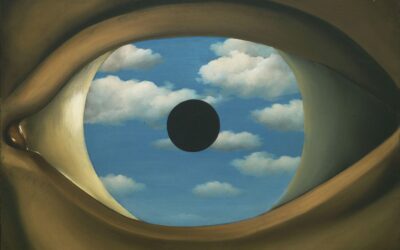From Jewish Messiah to Greco-Roman Hero: The Transformations of Jesus in Early Christianity The story of Jesus Christ is undoubtedly one of the most influential narratives in human history. But the Jesus we know today - the divine-human savior who died and rose again for the salvation of the world - is in many ways a product of the complex cultural and religious milieu of the ancient Mediterranean. To understand how the Jewish Messiah became the cosmic Christ of Christian faith, we must explore the profound...
Carl Jung’s Shadow: Holding the Tension of Opposites in Depth Psychology
Carl Jung's Tension of Opposites: Mapping the Psyche's Polarities for Healing and Wholeness One of Carl Jung's most profound yet often misunderstood ideas is the concept of the tension of opposites within the psyche. Far from a simple binary or a problem to be solved, this dynamic interplay of contrary forces is in fact crucial to the process of growth and individuation. As Jung wrote, "The self is made manifest in the opposites and in the conflict between them; it is a coincidentia oppositorum [coincidence of...
Lenses of Inquiry: How Philosophy Can Inform Psychology
How to Use Philosophy in Existential Therapy Philosophy and psychology have long been intertwined, both seeking to understand the complexities of the human mind and experience. By applying philosophical frameworks as lenses of inquiry, we can gain deeper insights into psychological phenomena and develop more effective therapeutic practices. Let's explore how approaches like phenomenology, epistemology, existentialism, and others offer valuable perspectives for psychology. Phenomenology: Exploring Lived Experience...
The Hero’s Journey from Gilgamesh to Greek Tragedy:
Evolving Mythologies and Depth Psychology The hero's journey is one of the most enduring archetypes in world mythology, a narrative pattern that has shaped stories across cultures and centuries. At its core, the hero's journey is a psychological one—a symbolic representation of the process of individuation, the development of the self through the integration of conscious and unconscious elements. By tracing this archetype through the evolution of ancient mythology, particularly in the Greek tradition, we can gain...
Free Comprehensive Jungian Psychology Resource Library
Complete Jungian Psychology Resource Library How do I learn about Carl Jung and Jungian Psychology? Delving into the depths of Jungian psychology can feel like exploring an endless labyrinth of interconnected ideas, spanning from the personal shadow to collective mythologies that shape our understanding of the human psyche. This comprehensive resource library serves as your Ariadne's thread, guiding you through Carl Jung's revolutionary concepts and their modern applications. Whether you're a practicing...
A History of Psychotherapy and How it Got Here
Why Are There So Many Modalities of Psychotherapy? The history of psychotherapy is a tumultuous one, marked by heated debates, acrimonious splits, and competing claims to truth. From its origins in Freudian psychoanalysis to the present-day landscape of integrative approaches, the field has been shaped by a succession of theoretical and clinical revolutions, each building on and reacting against what came before. Freud and the Psychoanalytic Diaspora The first great schism in the history of psychotherapy occurred...
Intuition or Magic? The Brainstem-Intuition Connection
Unlocking the Power of Unconscious Processing and Pattern Recognition in the Context of Trauma What does the Subcorticle Brain Have to do with Intuition? The brainstem, often overshadowed by the more prominent prefrontal cortex, plays a crucial role in rapid, unconscious information processing. This processing forms the foundation for intuition and deep pattern recognition, abilities that can feel almost supernatural or spiritual in their accuracy and insight. Recent research has begun to uncover the complex...
The Trial of Carl Jung: Assessing a Legacy
Was Carl Jung a Pseudoscientist? "The world today hangs by a thin thread, and that thread is the psyche of man." - C.G. Jung This trial will be an effort in intellectual history and retrospective assessment, not a literal legal proceeding. But it will draw on the judicial spirit of weighting evidence, calling expert witnesses, and rendering an impartial verdict. In that sense, it will be a trial in the court of informed opinion, one that will ask: How do Jung's legacy and the claims of analytical...
Carl Jung’s Secret Work with the OSS: Profiling Hitler and Understanding the Fascist Mind
Did Carl Jung work with the CIA? Carl Jung, the famed Swiss psychiatrist and founder of analytical psychology, led a fascinating life that included a little-known period working with the American Office of Strategic Services (OSS), the intelligence agency that later became the CIA, during World War II. At the request of the OSS, Jung developed psychological profiles of Adolf Hitler and other Nazi leaders in an effort to better understand the fascist mindset. In 1943, Jung was contacted by Allen Dulles, who headed...
From Mal’ta to Eden: Tracing the Archetypal Roots of Human Mythology
Is the Mal'ta-Buret culture the prototyp for world religion? In the remote reaches of Siberia, archaeologists uncovered a fascinating window into the deep prehistory of human symbolic thought: the Mal'ta-Buret' culture. Dating back some 20,000-25,000 years, this Paleolithic society left behind intriguing artifacts that resonate uncannily with mythological motifs from much later periods (Bednarik, 2012). From exquisite Venus figurines to mysterious bird-man statuettes, the Mal'ta-Buret' culture offers a...










